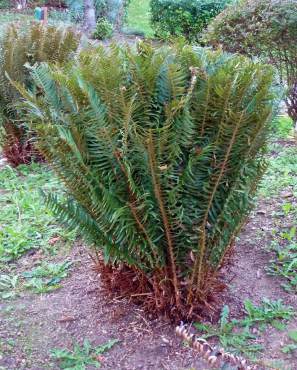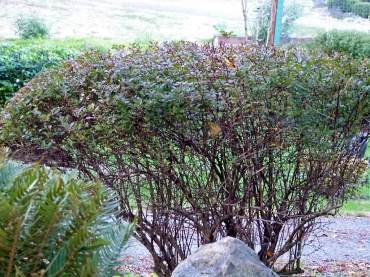 I hope you’ve had many opportunities to get out into some of our wilderness areas to experience nature untouched by human hands. Did you marvel, as I have, at the overwhelming beauty of these natural landscapes?
I hope you’ve had many opportunities to get out into some of our wilderness areas to experience nature untouched by human hands. Did you marvel, as I have, at the overwhelming beauty of these natural landscapes?
Nature is a very gifted designer and landscaper, indeed. I strive to follow her example, although a garden, by its very nature, is a created space for human pleasure.
Still, there are so many lessons we can learn from nature, not the least of which is the appropriate placement of trees and shrubs, and honoring the form that they posses.
Imagine my surprise when I walked by some beautiful sword ferns that had been recently tip-pruned into balls by a yard service! In fact, most shrubs on the property had been sheared into rounded forms, regardless of the plant.
This type of indiscriminate shearing may seem like a quick way to bring order to a garden, but it is generally not appropriate since it stimulates growth at the site of each cut (not in ferns, certainly, but in shrubs and trees).
 The response can be fast-growing branches (water sprouts) or dense growth at the tips. Either way, the original form of the plant is lost.
The response can be fast-growing branches (water sprouts) or dense growth at the tips. Either way, the original form of the plant is lost.
I avoid pruning trees and shrubs this time of year (fall) in order to allow them to harden off before winter frosts. Pruning, other than minimal thinning cuts, stimulates growth, and such tender growth may not survive the plummeting temperatures of winter.
Allow roses to mature their hips now, and leave the hard pruning till the dormant season or spring time, depending on the plant.
You can find excellent information on pruning specific plants both in books like Cas Turnbull’s “Guide to Pruning,” The American Horticultural Society’s “Pruning & Training” and various online resources.
Granted, some formal and whimsical designs get much of their structure from the sheared forms of boxwood or other shrubs, and some trees can be carefully pollarded every year for that specific effect.
But rounding sword ferns into balls? There is beauty all around us in nature, let’s learn from it.
























